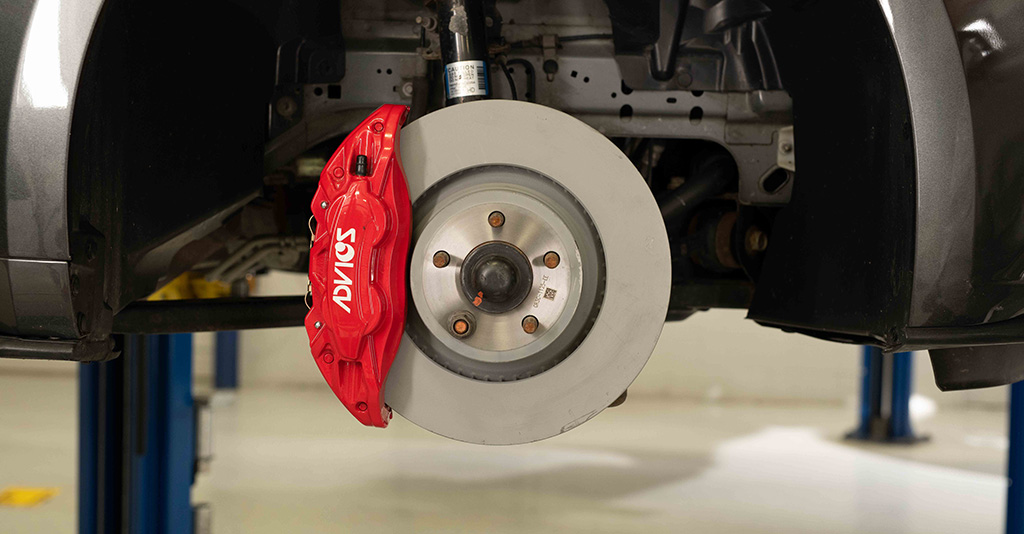
November 4, 2021
Brake shimmy, shaking, vibration and noise – these are all common reasons for a customer to visit the shop. Most of the time these issues are due to different components of the steering or braking systems needing replacement or repair, but other times, these issues can be caused by the improper installation of brand new parts, like fresh brake rotors and brake pads.
Your customer might ask, “how is this noise and vibration possible?! I just had my brake pads replaced!”
As a technician, you know that proper bedding-in of new brake rotors and brake pads is a must, so customers can get back on the road safely. Completing this process properly also helps you avoid comebacks for pesky and easily avoidable noise and vibration issues.
Keep reading for tips from the OEM-trained technicians here at ADVICS, to help you perform your brake rotor and brake pad bedding-in process correctly, the first time.
What is Bedding-In?
Simply put, brake bedding is a conditioning process to “break in” a new set of brake pads and a brake rotor that will be used together. Our technicians always recommend pairing an ultra-premium brake rotor with ultra-premium brake pads.
The 30-30-30 Rule
At ADVICS, our technicians follow the 30-30-30 rule for bedding-in and suggest this as the preferred method. That means performing 30 slow stops from 30 mph, with at least 30 seconds of cool down in between.
This allows a healthy amount of heat to build up on the surfaces of the brake rotor and brake pad, helping to lay down that important layer of transfer film onto the brake rotor surface, thus bedding-in or breaking in the fresh brake pads and brake rotors.
The bedding-in process should be done carefully, as rapid buildup of heat can lead to warped rotors or glazed brake pads. By the 400-500 mile mark, the brake pads and brake rotors are properly broken in; be sure to tell customers that for optimal performance they should avoid any hard or severe braking until they reach that number of miles driven with the new brake rotors and brake pads.
Excessive Run-Out
When performing a brake job, our technicians always recommend starting with fresh brake pads and fresh brake rotors, but, if you must use the customer’s existing brake rotors, thoroughly inspect to determine that they do not have excessive run-out of over .004” (.10mm).
If the existing brake rotor does show excessive run-out, DO NOT continue your install and DO NOT drive using that brake rotor. Brake rotors with excessive run-out can cause vibration issues, shaking through the steering wheel and even total brake system failure, so let the customer know that the brake rotor needs replacing and is not considered safe for driving.
Brake Rotor Surface Inspection
Bedding in new brake rotors and brake pads requires you to be meticulous in your inspection of the parts you’re working with and installing on the vehicle. Failure to do so can result in undesirable consequences for your customer, including brake judder, shaking and excessive noise.
If you’re using brand new brake rotors and brake pads (what we recommend), you can proceed with the 30-30-30 Rule after proper install according to the manufacturer’s instructions. If you must use the customer’s existing brake rotor and have inspected its thickness to ensure it meets the requirements for safe operation, clean the brake rotor’s surface to remove any debris or existing transfer film from the old brake pads. In both situations, you should still proceed with the bedding-in process.
When compounds are present on the brake rotor’s surface, it can cause a slip-grip-slip pattern as the brake pads pass over the brake rotor surface when pressure is applied. This causes vibration to pass through the suspension and steering wheel and can often be misdiagnosed as a warped rotor. That’s even more reason to take your time during inspection and make sure you get the full story from customers when they arrive for service.
While the tips above can be considered best practices, always refer to the manufacturer’s information for proper install and bed-in procedures to ensure customers leave your shop with the safest stop possible.
